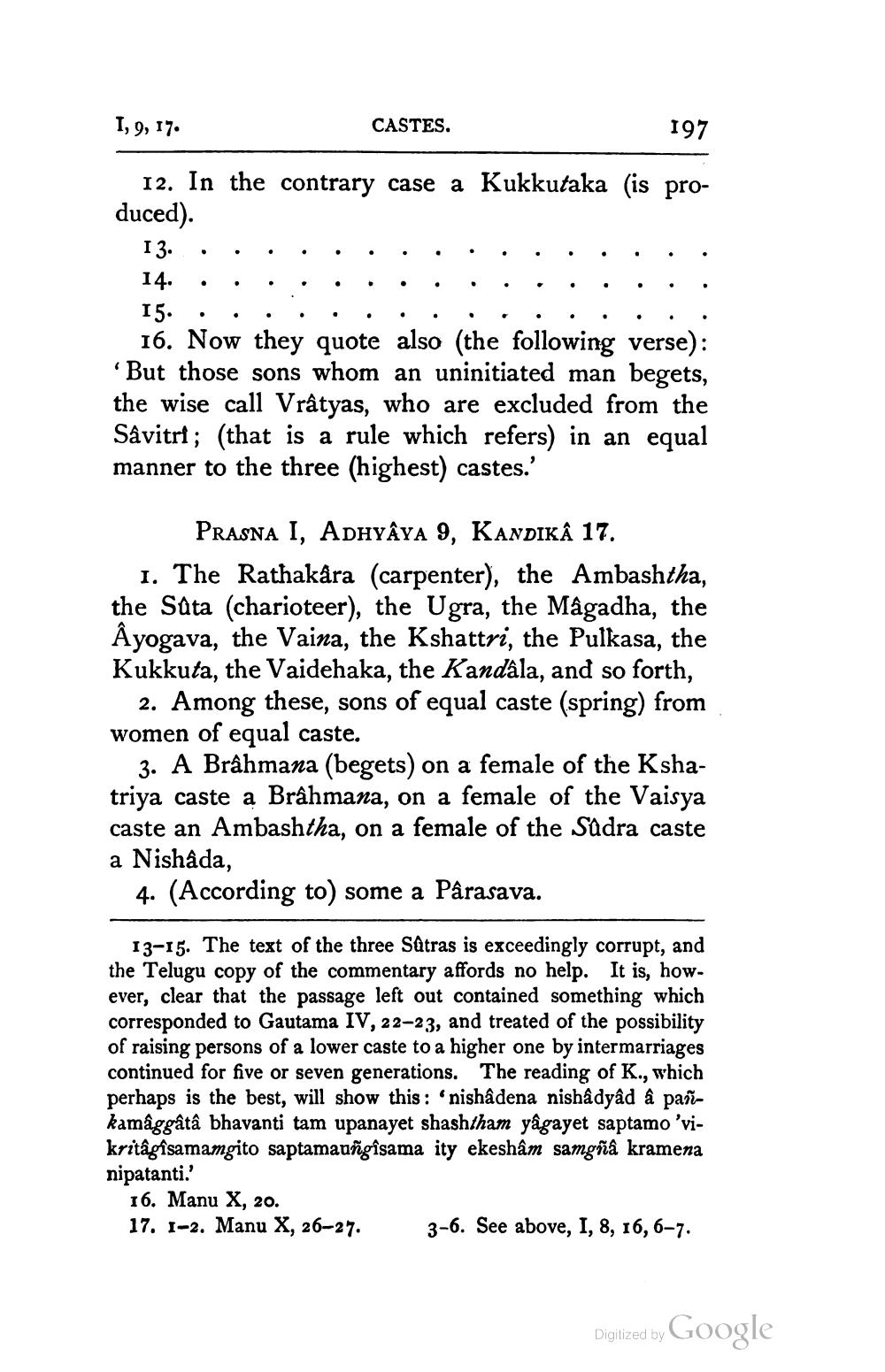________________
1, 9, 17.
CASTES.
197
12. In the contrary case a Kukkutaka (is produced).
13. ················ 14. · · · · · · · · · · · · · · · · 15. . . . . . . . . . . . . . . . . 16. Now they quote also (the following verse): But those sons whom an uninitiated man begets, the wise call Vrâtyas, who are excluded from the Sâvitri; (that is a rule which refers) in an equal manner to the three (highest) castes.'
PRASNA I, Adhyâya 9, KANDIKÂ 17. 1. The Rathakara (carpenter), the Ambashtha, the Sata (charioteer), the Ugra, the Mâgadha, the Ayogava, the Vaina, the Kshattri, the Pulkasa, the Kukkuta, the Vaidehaka, the Kandâla, and so forth,
2. Among these, sons of equal caste (spring) from women of equal caste.
3. A Brâhmana (begets) on a female of the Kshatriya caste a Brâhmana, on a female of the Vaisya caste an Ambashtha, on a female of the Sudra caste a Nishâda,
4. (According to some a Pârasava.
13-15. The text of the three Sätras is exceedingly corrupt, and the Telugu copy of the commentary affords no help. It is, however, clear that the passage left out contained something which corresponded to Gautama IV, 22-23, and treated of the possibility of raising persons of a lower caste to a higher one by intermarriages continued for five or seven generations. The reading of K., which perhaps is the best, will show this: 'nishâdena nishadyâd â pankamaggâtâ bhavanti tam upanayet shashtham yâgayet saptamo 'vikritâgîsamamgito saptamanñgîsama ity ekesham samgñã kramena nipatanti.
16. Manu X, 20. 17. 1-2. Manu X, 26-27. 3-6. See above, I, 8, 16, 6-7.
Digitized by Google




